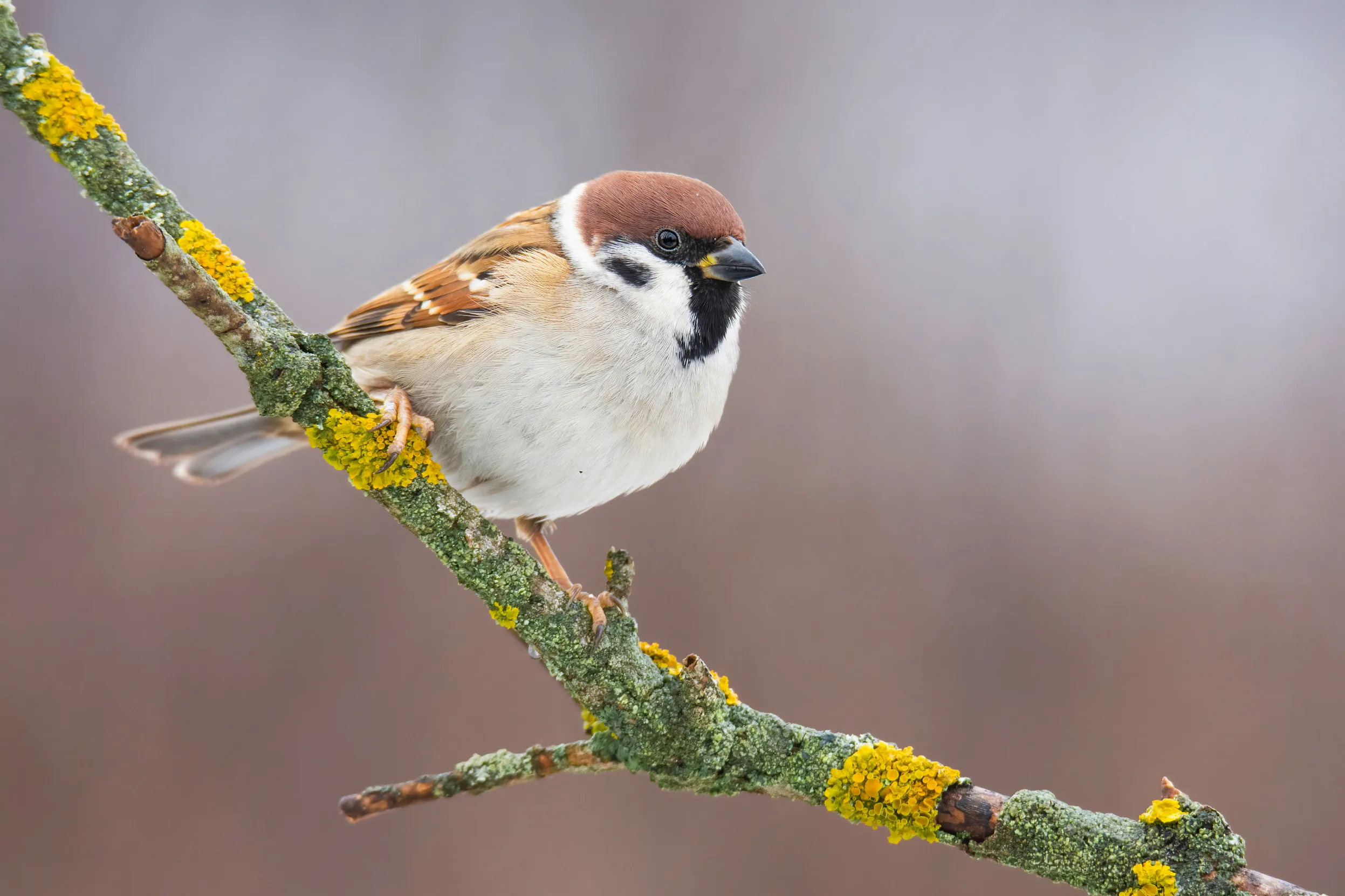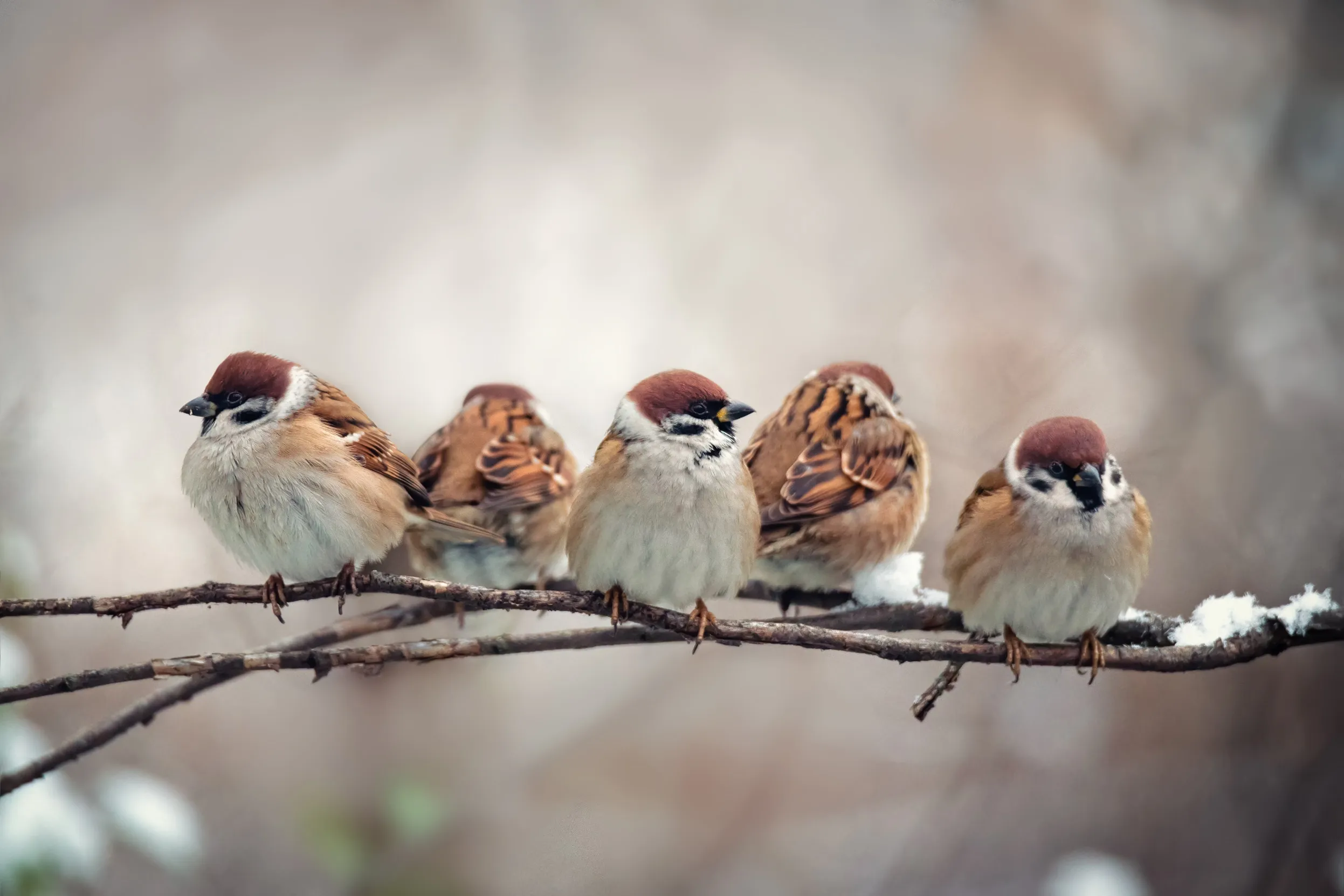
Tree Sparrow - Advice for farmers
The Tree Sparrow is generally found on lowland farmland with arable or mixed farming.

On this page
Tree Sparrows in brief
The UK population of the Tree Sparrow has been in steep decline. This is probably because fewer seed and insect food sources are available to them on farmland.
Tree Sparrows nest in holes, traditionally in old trees, hedges or farm buildings. Protecting these nest sites is vital.
Key points
- Use low-input crop management, field margins or wetland features to create insect-rich habitats.
- Use overwinter stubble or wild bird seed mixtures to provide seed food throughout the winter.
What this species needs
Insects and spiders to feed to chicks in the spring and summer
Tree Sparrow chicks are fed on insects for the first two weeks of life. These insects come from a wide range of habitats including hedges, crops and waterside vegetation.
Lots of seeds throughout the year
Adults feed mainly on seeds. They seek places where they can find lots of seed food. Such areas include winter stubbles, root crops, wild bird cover, weeds in the crop margins or areas of spilt grain.
Holes for nesting
Tree Sparrows nest in colonies in holes in trees, farm buildings and nestboxes. Occasionally they build nests in dense bushes. It would be easy to remove or destroy vital nesting habitats inadvertently without being aware of a colony.

How to help
On arable land
- Only use pesticides when the infestation exceeds the economic threshold. Try to avoid using broad- spectrum insecticides after 15 March. These remove beneficial insects and spiders which move into the crops in the spring. The loss of this food source is particularly damaging to Tree Sparrows.
- Adopt conservation headlands. Avoid spraying the outer 6m of cereal fields with insecticides or herbicides targeted at broad-leaved weeds. This enables beneficial insects and chick food for tree sparrows to survive.
- Spray and cultivate stubbles as late as possible. This provides important winter feeding habitat.
- Provide a food supply for Tree Sparrows by creating grass margins around arable fields. Select margins which have thick hedges.
On grassland
- Introduce arable fodder crops or small plots of wild bird cover to provide a seed-rich habitat in pastoral areas. Maize is probably not of value to Tree Sparrows unless it is undersown with a seed-bearing crop such as linseed.
- Fence off margins of up to 6m around improved grassland and leave these unfertilised, uncut and ungrazed. Graze or cut in September every two to three years. Select margins which have thick hedges.
Looking after nest sites
- You could ask a local birdwatcher or your county bird club to find the nesting area of your tree sparrow colony. This will ensure the colony is safe from accidental damage.
- Maintain large thick hedges on the farm and retain any old bushes, trees or farm buildings that may contain nesting holes.
- Continue to manage old pollarded trees and re-pollard neglected trees, as these provide nest sites.
- Use nest boxes to supplement the number of nest sites. Boxes should have 2.8cm diameter entrance holes and an internal box depth of 20cm. Tree Sparrows nest in colonies, so place several boxes on each tree, close together and above head height.